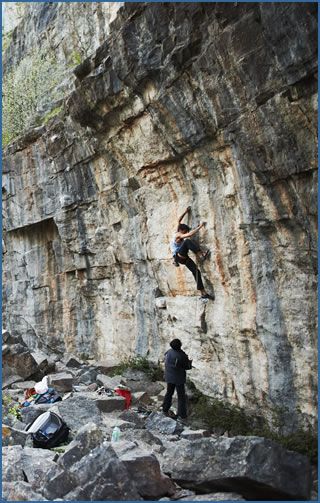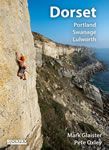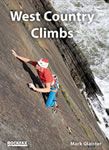Rockfax West County Climbs Guidebook
Buy rock climbing guidebooks for the southwest of England from our shop.
England: Southwest sport climbing, by Tom Newberry
Tom Newbury describes some of the best sport climbing locations in the southwest of England: Portland, Cheddar Gorge, and Brean Down.
Sport climbing at Portland
Background: Over the last 20 years the Isle of Portland has consistently been a well-known and well visited sport venue, offering almost 1,300 well bolted sport routes from F2 to F8b as well as hundreds of boulder problems. Located on the south coast of England, the Isle is unusually connected to the mainland via Chesil Beach, an 18 mile spit. Originally the rock provided the island’s main industry through quarrying, with the stone used to repair St Paul's Cathedral in London and build the United Nation Headquarters in New York. Nowadays, the compact limestone cliffs provide possibly the best sport venue for routes up to 7b in the UK. The island compromises of six main areas all set above the English Channel; each offering a contrast in style, difficulty and length. Generally the climbing tends to be just off either side of vertical on jugs, crimps, pockets and glorious flow stone features.
Grades and Route Recommendations: Portland is frequently referred to as the King of 6’s (although the 7’s aren’t so bad either) due to the vast amount of quality low-to-mid grade climbs. For a first visit I would head to Blacknor on the west coast, home to some impressive pitches on stunning flowstone formations. This is a great place to start your sport climbing career, get lots of mileage in or work on a personal best. To get you started my recommendations would be: The Bolt Factory (4+), Slings Shot (5), Shit Happens, Actually (6a), Go with the Flow (6a), Ocean Drive (6a+), Burning Skies (6b+), The Unknown Solider (6b+), Turner to Stone (6c+), Portland Heights (7a), England’s Dreaming (7a+), Twangy Pearl (7b), Freaky Ralph (8a+).

Hayley Stokes on a classic Portland crimpfest.
Equipment: Twelve quickdraws and a 60m rope will be sufficient to see you up most of the routes on the island. It is rare for the routes to require a traditional rack and most of the classics are adequately bolted with stainless steel staples. Although not a necessity, I would recommend packing a clip stick especially if redpointing. Portland has several choices of guidebook, these being the Rockfax Dorset guidebook and the Climbers' Club Portland guidebook that also covers the bouldering found on Portland.

The photograph shows Portland in all its glory.
Sport Climbing at Cheddar Gorge
Background: Cheddar Gorge is one of England's most iconic and spectacular landscapes. Created by Ice age melt-waters over millions of years, Britain’s biggest gorge is three miles long with cliffs rising up 450ft. This world famous beauty spot, with weathered crags and pinnacles, is not only a popular climbing destination for south west climbers, but also a National Nature Reserve and site of prehistoric discoveries. The Gorge’s popularity stems from its diverse range of pitches: safe trad, scary trad, powerful sport, pleasant sport, simple single pitch cragging, 5 pitch epics, and even a spot of bouldering for the keen. However, these days most are attracted to the easy access single pitch sport routes that frame the meandering road.
So what styles of climbing can you expect to find at Cheddar? Well, with over 15 sectors there are seemingly blank walls containing sinker slots, horizontal striations consisting of hidden positive edges, plenty of protruding features for varied footholds, roofs with satisfying jugs to haul through on, short bouldery nightmares and some longer gently overhanging stamina fests. That said, routes tend to be quite cruxy suiting those with strong fingers and good power endurance. Those are some of the styles but what about angles and grades? Again, you can find just about everything to suit everyone. The grades start amazingly as low as f4’s, with f6’s being by far the most abundant grade and the routes carry through to the f8’s. Bristol’s strong dark horse, Chris Savage, established the hardest routes putting up two 8cs.
Conditions and Access: Cheddar is ideal for varying weather conditions, offering crags at all aspects. You can seek sun, shade or shelter making it a year round crag. Most routes at steep sectors such as Lion Rock, Remnant and Pride Evans Cave can stay dry during light rain; nevertheless, it is not a wet weather venue. After rain it’s always worth taking a drive up the gorge as some sectors can dry pretty quick and only seep after very heavy and prolonged rain. Nearby, Brean Down is a reliable back up for Cheddar if you arrive to find your projects sodden there.

Tom Newberry climbing Bursting the Wave (F8a) at Cheddar
Access is a hot topic when climbing in Cheddar, with several strict yet simple rules in place. Put simply, to prevent further access issues and keep climbing open in the Cheddar Gorge you:
- Are required to have third party liability insurance in case they cause injury or damage property. This often comes with being a BMC member or part of a climbing club.
- Must abide by the restrictions on the south side
- Should only park in the long-stay visitor car parks.
Sport Climbing at Brean Down
Brean Down is a crag that offers a pleasant day out all through the winter; with sun from dawn until dusk, and shelter from the prevailing winds that is quick to dry after rain. And all of this comes just ten minutes off the M5!
Background: Brean Down is one of the key landmarks of the Somerset coastline - jutting out into the Bristol Channel. It offers two cafes near the beach, a small visitor centre and a superb little limestone cliff all with the bonus of being just off the M5. Currently it mainly gets the attention of locals seeking a bit of sport climbing action or the occasional one-stop sampler for passing climbers. However, its sport climbs are worthy of greater attention and with Brean’s increasing popularity it should be making it on the tick list for weekend visitors from afar for some first-rate early or late season routing.
There are around 30 neat sports routes on a clean, compact and user friendly cliff face. Most lines vary from 12 to 18 meters long making it a good place to transfer some indoor fitness outside. Brean has a surprisingly good range of routes despite it being a relatively small crag, with the difficulties starting at 6a all the way up to 8b. The main concentration of better routes are between F6c and F8a. Personally, I feel that the grades at Brean tend to be a tad on the easy side compared to other crags in the UK. This makes it a good place to break through to the next grade or is a nice place to boost your confidence before going on a trip. Being on a compact and accessible cliff Brean is a great destination for mixed ability groups, getting some mileage in or working on a personal best. Generally the climbing tends to be just off vertical on jugs, crimps, flow stone features and the occasional pocket. Routes tend to be quite cruxy suiting those with strong fingers and good power endurance.
To get you started my recommendations would be: Brean Dream (6a+), Coral Sea (6c), Pearl Harbour (7a), The roof of Inequity (7a+), Chulilla (7b+), Storm Warning (7c+), Black Snake Moan (8a) and Brean Topping (8b).

Ben Russell climbing Tide Rising (F7b+) at Brean Down
Conditions and Access: The sheltered, south-facing aspect means the wall is a real sun trap (if there is any sun around then Brean is likely to get it), so in the warmer months you may wish to avoid sunny days or time your redpoint attempts to follow the shade which arrives around after 5.30. However, in the depths of winter it’s the ideal place to head with a chance of climbing in a tee-shirt not unlikely. Most routes can stay dry during light rain; nevertheless, it is not a wet weather venue. After rain it dries pretty quick and only seeps really badly after very heavy and prolonged rain. This also means Brean can be a good back up for Cheddar if you arrive to find your projects sodden there.
Equipment: Standard British sport gear really… ten quickdraws and a 50m rope will be sufficient to see you up all the routes. The routes are generously bolted so clip-sticks are not a necessity, but those wishing to push their grade may want to pack a clip-stick. The crag is well covered in the RockFax West Country Climbs Guidebook and the Climber’ Club South West Climbs Volume 1 Guidebook.
Rockfax West County Climbs Guidebook
Buy rock climbing guidebooks for the southwest of England from our shop.




